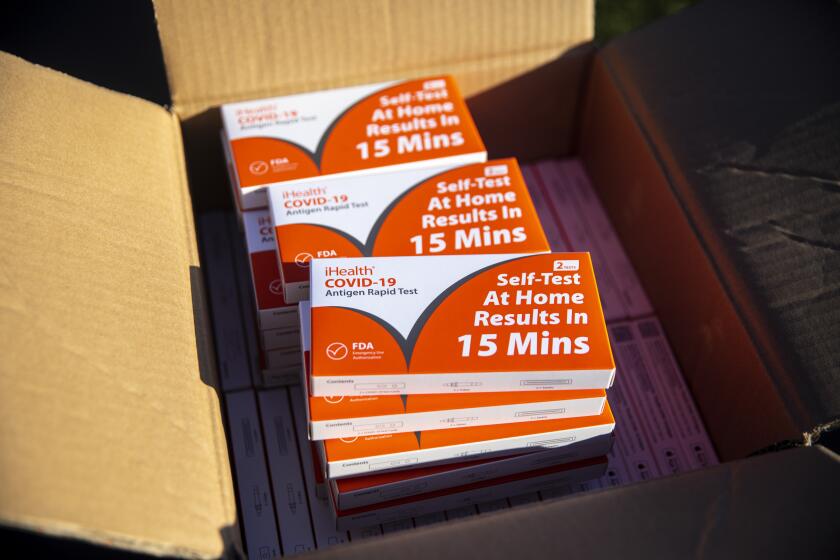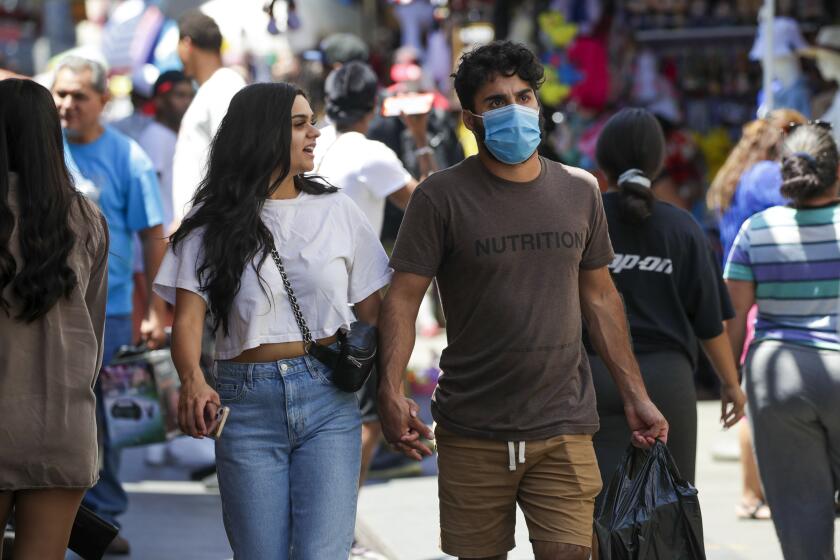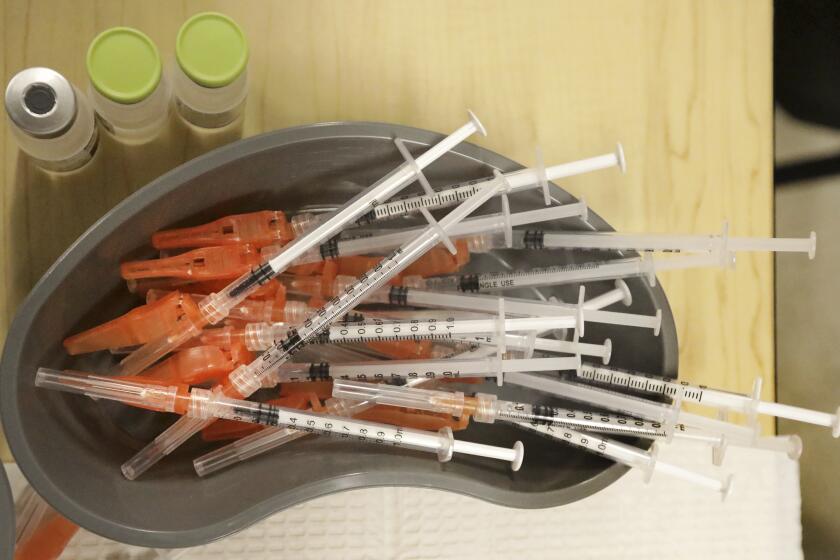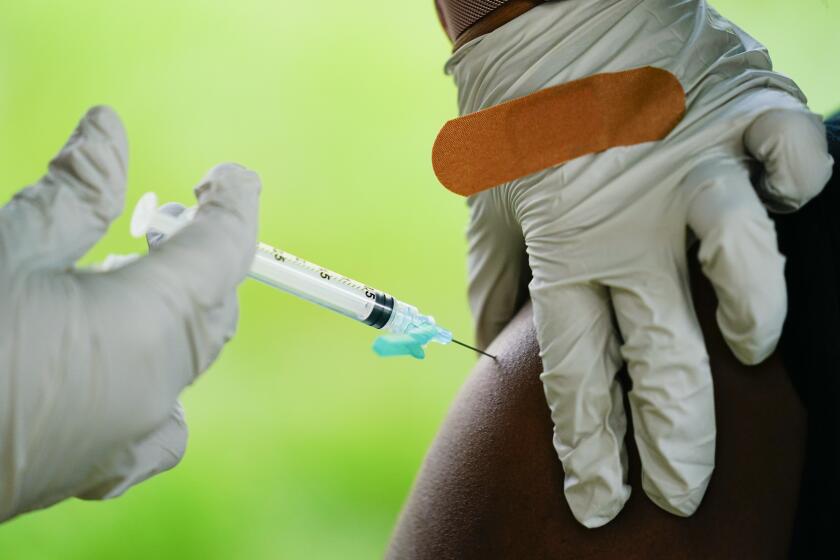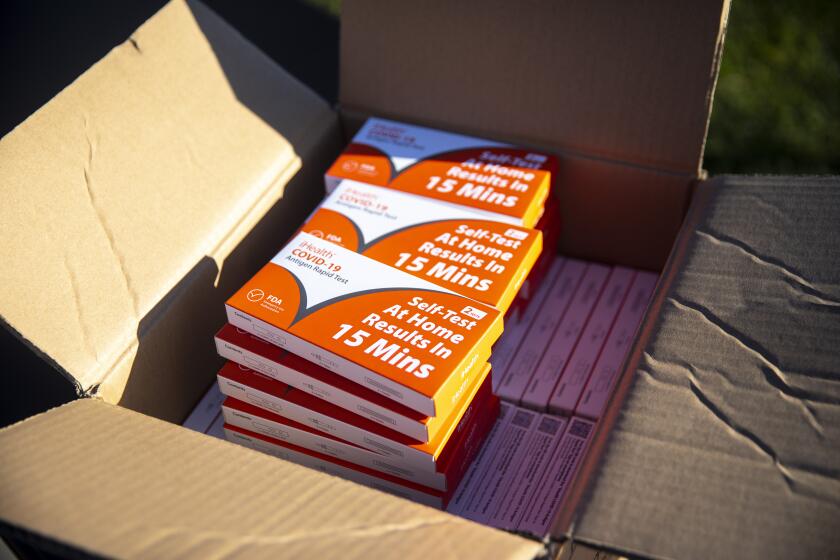Californians working while sick with COVID-19, fooled by mild symptoms
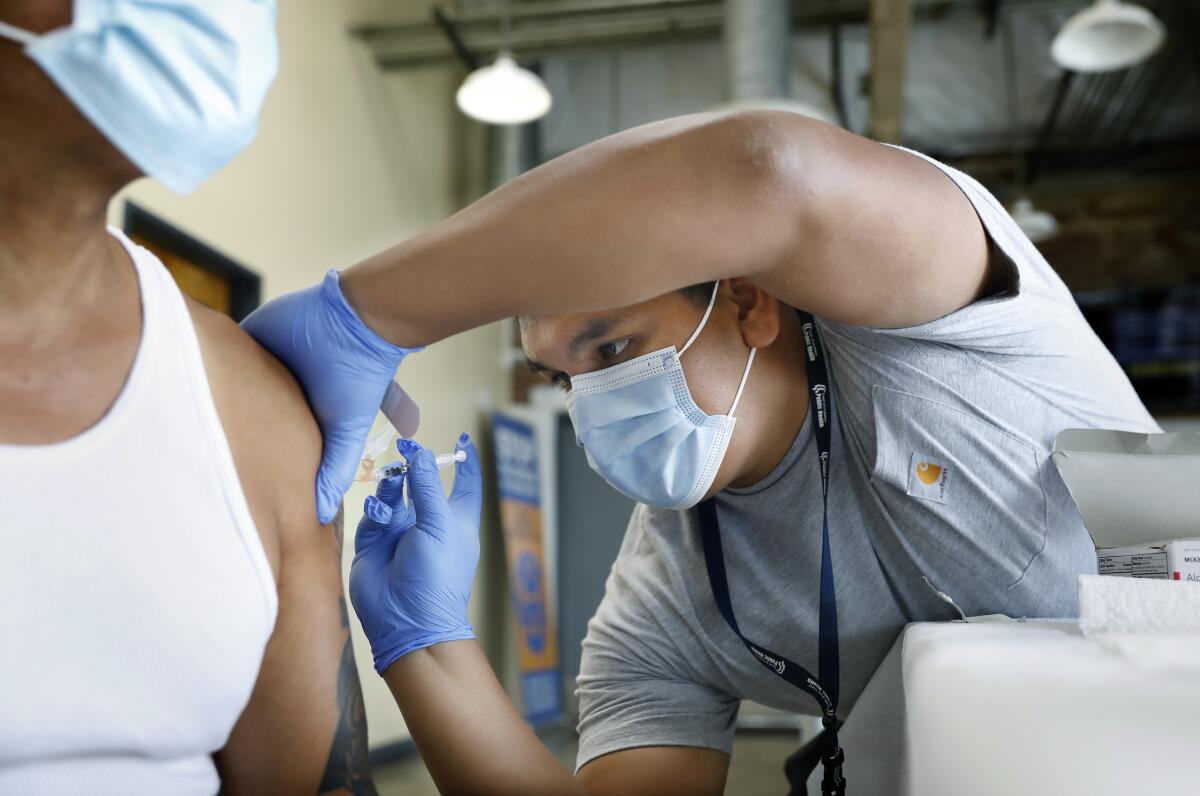
Experts are warning that employees might be showing up to work while sick with COVID-19, with symptoms so mild even healthcare workers are being fooled.
It has long been known that people experiencing mild or no symptoms can spread the coronavirus to others. But health experts are now noting that more people who are experiencing very mild illness are working anyway — exacerbating the transmission risk.
Dr. Ralph Gonzales, a UC San Francisco associate dean, said at a recent campus town hall that the latest dominant Omicron subvariant, BA.5, can result in symptoms so mild that healthcare workers are still working despite the illness. Some people are not testing positive until four or five days after they start showing symptoms of COVID-19.
“We are seeing more employees having been on site with multiple days of symptoms. So please try not to work with symptoms — even if they’re mild — because we are seeing quite a bit of mild symptoms with BA.5, and people often don’t even realize they’re sick,” Gonzales said.
Health officials stress that at-home tests are a vital and accurate way of tracking COVID-19 infections but an initial negative test doesn’t mean people are out of the woods.
While case counts are down markedly from the heights of the latest wave, the risk of exposure remains high. Almost every California county has a high rate of coronavirus transmission, defined as 100 or more cases a week for every 100,000 residents.
When case rates are at this level, “it’s still recommended to layer in precautions that we have all become familiar with during the pandemic, including masking indoors, staying home and getting tested when ill, making good use of the outdoors and maximizing ventilation indoors and getting tested before gathering where people of vulnerable health may be present in order to protect them,” Dr. Muntu Davis, Los Angeles County health officer, said Thursday.
The number of L.A. County work sites reporting clusters of coronavirus cases continues to fall; there were 144 in the most recent week, down from 152 the previous week.
At sites where there are outbreaks, Davis said, factors that typically increase the spread of illness are a lack of masking and the presence of people at work who aren’t aware they have a coronavirus infection.
That’s “why it’s really important for people to ensure that if they feel sick, even with mild symptoms, to test themselves and make sure that they don’t have COVID,” he said. “There have been some studies that have shown in the past that even up to about 56% of people didn’t know they had an infection.”
Health officials recommend that anyone infected with the coronavirus isolate for at least 5 days — but for many, that timeline may be overly optimistic.
That’s especially vital now as the Omicron variant and its family of sub-strains have proved particularly difficult to avoid — even for those who have long dodged a coronavirus infection.
A review of infections from UC San Francisco’s Office of Population Health found that through the beginning of 2022, less than 10% of the campus’ employees and students had a prior COVID-19 illness, Gonzales said. But the various waves of the ultra-contagious Omicron variants radically changed the cumulative infection rate.
By the beginning of spring, 20% of the university’s employees and students had had a coronavirus infection, according to data shared by Gonzales. And by mid-summer, 45% had been infected, Gonzales said.
An Axios/Ipsos poll recently said that about half of U.S. adults have had a coronavirus infection at some point.
COVID-19 vaccines that better match today’s dominant Omicron strain are expected to roll out soon, but how much will they help?
The most recent seroprevalence estimate for California — the share of residents thought to have been infected with the coronavirus at some point — was 55.5% in February, according to data from the U.S. Centers for Disease Control and Prevention. That was up markedly from an estimated 25.3% in November, before Omicron became widespread.
The proportion of Californians infected at some point has almost assuredly continued to climb throughout this year, given the steady occurrence of newly reported infections.
Meanwhile, the pandemic’s effect on hospitals has declined as the summer Omicron surge has faded.
As of Thursday, only seven California counties had a high COVID-19 community level as defined by the CDC, which generally indicates both a high case rate and elevated level of new weekly coronavirus-positive hospital admissions.
The counties still in the high COVID-19 community level as of Thursday — Kern, Ventura, Monterey, Merced, Imperial, Madera and Kings — are home to about 2.9 million Californians, representing about 8% of the state’s population. By contrast, two weeks ago, 14.4 million Californians were living in the 21 counties in the high COVID-19 community level.
Pfizer has asked U.S. regulators to authorize its combination COVID-19 vaccine that adds protection against Omicron subvariants.
Counties that exited the high COVID-19 community level this week were Fresno, San Joaquin, Stanislaus, Humboldt, Sutter, Yuba, San Benito and Tuolumne. Those that exited the level the prior week were Orange, Santa Clara, Alameda, Contra Costa, San Mateo, Santa Barbara, Solano, San Luis Obispo, Napa and Mendocino.
Southern California counties in the medium COVID-19 community level include Los Angeles, San Diego, Orange, San Bernardino and Santa Barbara. Riverside County is in the low COVID-19 community level.
As of Monday, Los Angeles County was recording about 2,800 coronavirus cases a day for the prior seven-day period — about 40% of the summer peak of nearly 6,900 cases a day, though still far above the springtime low of about 600 cases a day.
On a per capita basis, L.A. County is reporting 192 coronavirus cases a week for every 100,000 residents.
Coronavirus-positive hospitalizations are trending lower. As of Friday, there were 889 coronavirus-positive hospital patients in L.A. County’s 92 hospitals, a 4% decrease from the prior seven days. State models project continued declines over the next month.
Federal regulators have extended some coronavirus tests’ expiration dates, meaning that certain offerings are now usable for months longer.
L.A. County reported 101 COVID-19 deaths for the seven-day period that ended Monday, 23% higher than the prior week’s count of 82. The peak weekly tally for the summer was July 31 to Aug. 6, when L.A. County reported 122 COVID-19 deaths.
More than 33,000 cumulative COVID-19 deaths have been reported in L.A. County since the pandemic began, including roughly 1,500 over the last five months. Before the pandemic, about 1,500 Angelenos typically died of the flu each year.
Some experts are expecting a fall-and-winter COVID-19 wave, as has occurred in the last two years, but it’s unclear how bad it may be. Officials are also concerned about the possible return of a significant flu season for the first time in the pandemic era.
The White House has signaled it expects a new Omicron-specific booster shot to become available in September. Health officials are urging people to get their flu shot and be up to date on their COVID-19 vaccines ahead of the winter.
More to Read
Sign up for Essential California
The most important California stories and recommendations in your inbox every morning.
You may occasionally receive promotional content from the Los Angeles Times.
